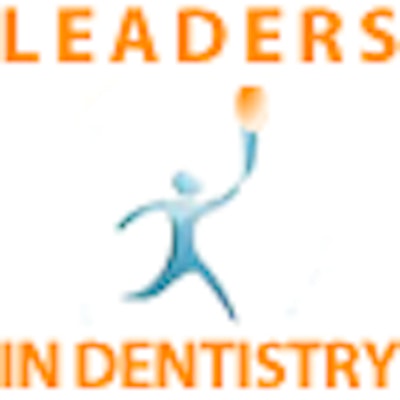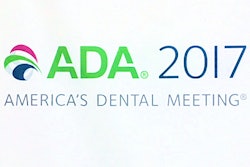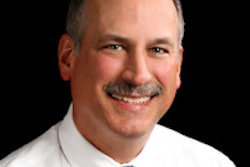
DrBicuspid.com is pleased to present the next installment of Leaders in Dentistry, a series of interviews with researchers, practitioners, and opinion leaders who are influencing the practice of dentistry.
We spoke with Margherita Fontana, DDS, PhD, an associate professor in the department of cariology, restorative sciences, and endodontics at the University of Michigan School of Dentistry. After immigrating to the U.S. from Venezuela in 1992, she earned her Doctorate in Dental Science from Indiana University in 1996. She was a visiting assistant scientist at the dental school's Oral Health Research Institute and served as a full-time faculty member from 1998 until accepting the position at the University of Michigan in 2009.
Today, Dr. Fontana is at the forefront of the caries management by risk assessment (CAMBRA) movement, which focuses on prevention and minimally invasive dentistry in dentistry. She is also an accomplished researcher with an interest in improving teaching methods and caries disease management, prevention, and remineralization, particularly in children.
In June she received the Presidential Early Career Award, the highest honor bestowed by the U.S. government on science and engineering professionals in the early stages of their independent research careers. The award was in recognition of the long-term study she is developing that is testing the effectiveness of risk-assessment tools in evaluating caries risk in 1,326 diverse young children from the time they are 1 until age 4.
DrBicuspid.com spoke with Dr. Fontana to learn more about her research project, CAMBRA's role in dentistry, and the logistics of its implementation.
DrBicuspid.com: What is CAMBRA's role in dentistry today?
 Margherita Fontana, DDS, PhD.
Margherita Fontana, DDS, PhD.
Dr. Fontana: First of all, CAMBRA is a fabulous idea for trying to move forward a philosophy of treating caries as a disease. It has been called different things -- minimally invasive dentistry, personalized dentistry -- but mainly CAMBRA is a philosophy. It's not a form, it's not a product, it is a philosophy of dealing with caries as a disease process and emphasizing early intervention, remineralization of noncavitated lesions, and very, very minimally invasive operative procedures when necessary.
You have to manage the disease process. Prevention is the forefront with an emphasis on trying to maintain health and doing it in a risk-based, individualized manner. If there is disease, understanding why it is present and then treating it.
We need to be assessing the risk of patients, we need to be detecting lesions more carefully and earlier than before so we can reverse and stop the disease early on. Because of the materials that we have nowadays, we need to be as conservative as possible. We should always be preserving tooth structure. That should be our goal.
How is adoption progressing?
We are making progress in getting out the knowledge and message. Pediatric dentists and general dentists want to know more about it and how to implement it. But we need to educate the existing workforce. I think most dental schools are starting to do a good job of educating the future workforce of our students. But our reimbursement and our treatment models, we're going to have to find better ways to make this cost-effective for everyone. And evidently we need more research into effective risk-based protocols.
It's a battle, but I think it's one that we are embracing. We are looking at ways to get CAMBRA into policy. It's very clear that to make it work, a risk-based reimbursement model would be very helpful. High-risk people, we need to see them more frequently. Every six months might not be enough. On the other hand, low-risk people might not need to be seen twice a year. This type of risk-based reimbursement is not in place right now, and a lot of people believe that having that would help the implementation of these strategies.
There is also a lack of good diagnostic codes in dentistry to be able to monitor lesions over time. If you're really trying to remineralize and arrest lesions, being able to track those and then getting reimbursed for success rather than disease would be something that a lot of people have been asking for.
But I'm not an economist and certainly don't work for an insurance company. However, insurance companies are getting involved. Some want to do it, but a lot of the burden is placed on the patient to pay out of pocket for all the extra things that they would need when they're at higher risk. That is even more difficult in a down economy.
Speaking of policy, will the Affordable Care Act (ACA), now more likely than ever to proceed with President Obama's re-election, have an impact?
The ACA will benefit children. They're the ones that will get the benefits if it goes through. In dentistry, I'm a researcher, and there are various areas that are key to moving this forward, such as models for risk assessment that are evidenced-based. To deal with early childhood caries you have to think beyond the dental world. Conversations with colleagues about nutrition become critical. The National Institutes of Health grant that I received looks at validating a medical form for medical practices so they can start prevention and more effectively triage patients to the dental profession so we see them earlier and start healthy habits.
Risk assessment in dentistry and interrelationships with other professions are crucial, as is behavioral research. Brushing and eating behaviors also impact obesity, diabetes, and other chronic medication conditions. Interprofessional studies that are looking into behavioral strategies -- this is a very hot topic and has funding opportunities to go with it.
How does your study relate to those areas?
It is a large, five-year, multidisciplinary project involving four states. For it, we recruit and follow kids for several years through different medical offices. They have access early (at 1 year) and hopefully all are healthy at that point. Then we assess risk for disease. Can we predict what will happen at ages 2, 3, or 4?
To do this involves developing and validating a risk assessment tool for caries that can be used in pediatric medical offices. A goal is to create a questionnaire a parent can fill out that can help a practitioner determine what level of preventive care could be provided by the child's medical doctor, or proper triage for high-risk patients to a general dentist.
The problem is that we don't have an evidence-based risk assessment tool that pediatricians can use; most of the tools that we have are still expert-based tools. Pediatricians are very busy. They want to do this, so if there were a tool that they could use to screen patients easily, implementation could be improved. That's the premise that we went into with this project. And so we're working with pediatricians, pediatric dentists, statisticians, survey design specialists, and more.
It's really an exciting project. The short-term impact could be very large, and we hope at the end of the day to have something that can be used in medical settings to better triage these children and make risk-based decisions.



















